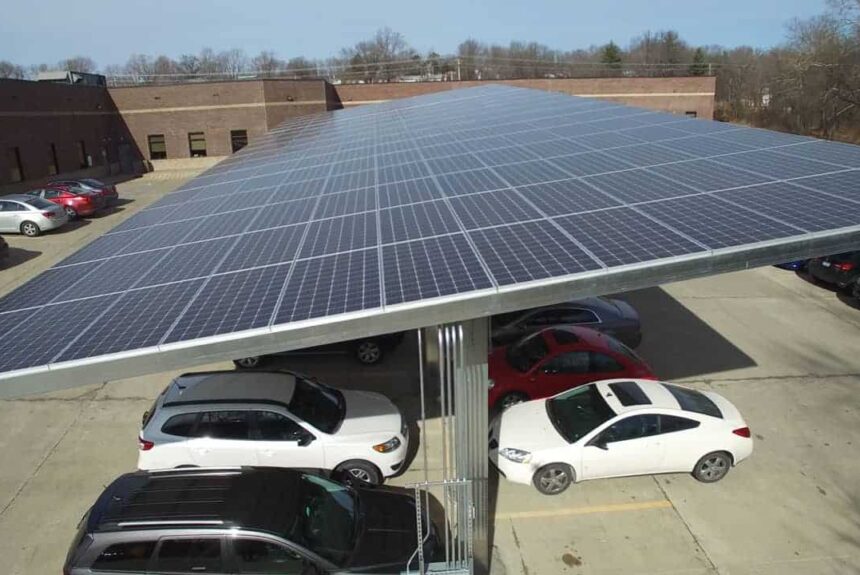Have you ever thought about the space taken up by parking lots? For most of us, the answer is probably no—after all, it is not really a crucial consideration for people other than developers or city planners. Parking garages are usually built in a relatively efficient way, making the most of vertical space. Parking lots, however, tend to sprawl. But now, a trend has taken off: making the most of sprawling parking lot space and leveraging it to generate power through solar carports.
>>>READ: Global Chaos Isn’t Slowing Clean Energy Development
Solar carports, or giant solar panels that protect the parking spots beneath them from the elements, are not brand new. The first solar carport premiered in Frankfurt, Germany in 2010. Dr. Manuela Rottmann, Frankfurt’s head of its environmental department at that time, had high praise for the innovation: “This is a revolution, much like that of Internet 2.0 compared to television 20 years ago.”
Since that initial launch in Germany, solar carports have come a long way. Earlier this year, the world’s largest solar carport project was launched in the Netherlands. The 90,000 panels within the project (covering a festival ground parking lot) generate 35 megawatts while creating 15,000 parking spots. Part of the energy generated by these panels goes to power the very festival that takes place where they are sited.
But solar carports have not just grown in size—they have grown in popularity. These carports are being installed around the globe. And, while solar carports are being mandated by many governments, France being a recent example, the private sector is driving expansion across the United States.
“You have a lot of significant companies that have stepped up and made commitments to renewable energy and similar things with local governments and institutions,” explained Bill Abolt, vice president and lead of energy business for infrastructure consulting firm AECOM. “So, there’s no doubt that that level of investment has accelerated the development of technology, the deployment of more cost effective solar.”
>>>READ: New Pilot Project Increases Solar, Decreases Drought
Target is one example of a company furthering solar carport development. The corporation revamped its Vista, California store earlier this year to cover the parking lot with solar. The carport panels are set to produce enough energy to power the entire store, with excess energy being fed back into the local power grid.
The Vista location is Target’s first net-zero energy store. “This is a big step for us in terms of how we’re testing and learning from innovations around sustainability,” commented John Conlin, senior vice president of Target properties.
Target may just have one converted store, but solar carports are being increasingly adopted into commercial real estate plans. Lars Norell, co-founder and co-CEO of Altus Power, explained, “We find that there is almost no debate around the wisdom of putting solar in a parking lot.” In the coming years, more companies will likely have property developed with solar carports installed during construction rather than having to retrofit parking lots to install the panels.
In 2020, solar made up just three percent of American energy generation. But projections estimate that 20 percent of America’s energy will come from solar by 2050. Solar carports are going to be an important contributor to reaching that projection in the coming decades.
Kelvey Vander Hart is a native Iowan, a member of the American Conservation Coalition, and a communications specialist at Reason Foundation.
The views and opinions expressed are those of the author’s and do not necessarily reflect the official policy or position of C3.
